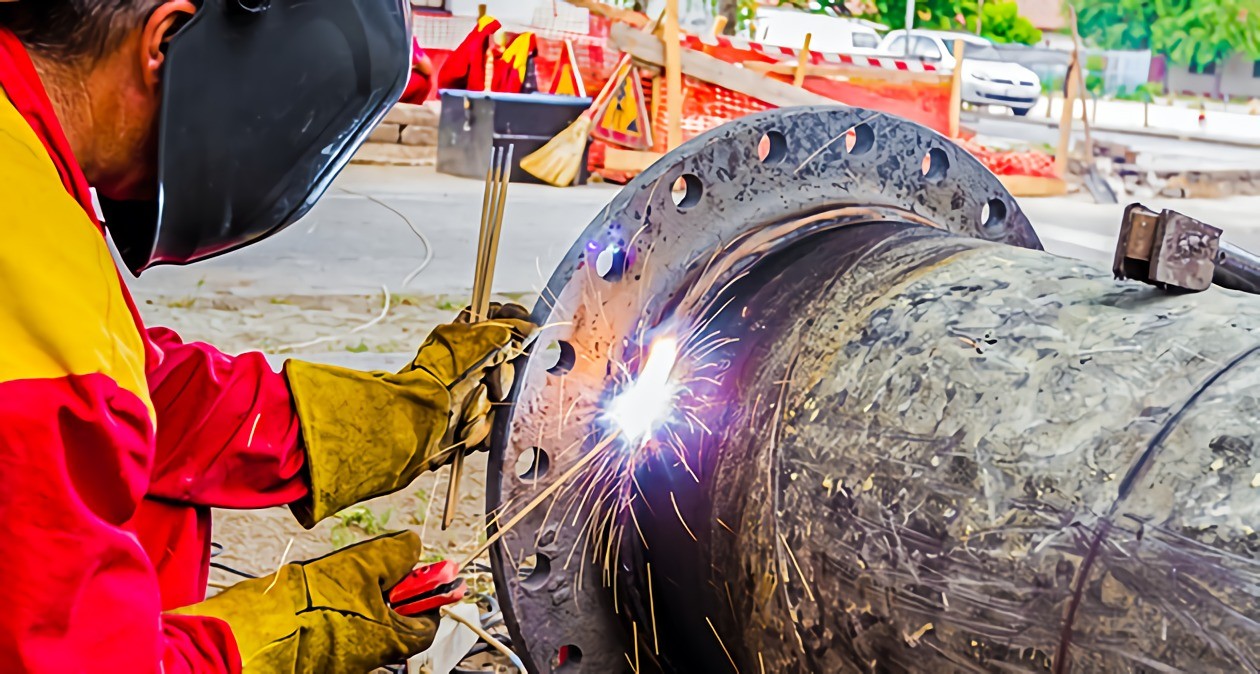TWS is a Great Training Option for Everyone
Learn more about how we can prepare you to advance your career.
Planes, trains and automobiles are all put together by welders. Welders are responsible for erecting bridges and buildings, as well as connecting water, oil and gas pipelines. Welding plays an essential role in numerous industries, from construction to energy extraction to transportation. Graduates from a professional welding training program have a multitude of career options waiting for them.
1) Sheet Metal Workers
Sheet metal workers work with thin sheets of metal that are used to make products like rain gutters or heating and air conditioning ducts. Furthermore, they also fabricate some of the parts needed for cars, airplanes, boats and other vehicles. Sheet metal workers should have decent computer skills, good manual dexterity and mechanical skills, as well as sufficient physical strength.
According to the Bureau of Labor Statistics (BLS) 1, in the 10-year period between 2012 and 2022, job growth for sheet metal workers will be stronger than average at a rate of about 15 percent. Those interested in becoming sheet metal workers are advised to undergo welder training to learn the basics of welding, including blueprint reading, building code requirements, and safety practices.
2) Structural Iron and Steel Workers
Structural iron and steel workers 2 primarily work with large beams to install columns in tall buildings or girders for bridges. Since it is physically demanding work, those who pursue a career in this field must have ample physical strength and good balance. Moreover, they should have good depth perception and must be unafraid of heights. Successful teamwork is crucial, as each member of the team must not only look out for his or her own safety, but also for the safety of his or her fellow team members.
Have You Considered a Career in the Skilled Trades?
Fill out the form to recieve a no obligation info packet.
According to the BLS, job opportunities in this field will increase by 22 percent by 2022. This is a much faster growth rate than average – more than twice as fast, to be exact. As the infrastructure of this country ages, older buildings, roads and bridges will need repairing, while the construction of new high-rise buildings is expected to continue as well.
3) Welding Inspectors
Welding inspectors do exactly what the job title infers: they inspect the work that other welders have done. This requires them to closely examine welds to ensure that there are no cracks or pits (sometimes with the help of magnification). They also subject the welds to stress tests. Welding inspectors are expected to keep detailed logs of the dates and results of their inspections. Thus, important qualities are attention to detail, mechanical/technical knowledge, communication skills, and welding experience.
Welders who wish to advance in their career can enroll in a welding degree program that trains them to be a welding inspector. Furthermore, the American Welding Society (AWS) offers welders the opportunity to become certified welding inspectors (CWI). According to the AWS, CWIs have “lucrative and rewarding” careers ahead of them that are stable as well as challenging.
4) Boilermakers
Boilermakers 3 fabricate, install, maintain and repair large vats for storage of liquids and gases. The vats are made of metal and must withhold extreme pressure. The core training for a boilermaker is very similar to that of a welder. The BLS points out that those who already received welding training typically complete boilermaking training relatively quickly. Boilermakers should be fit, strong, and unafraid of confined spaces and heights.
The BLS anticipates growth in this field over the next 10 years, but it will be slower than average. One reason for the slow growth is that manufacturers are automating the creation of the vats. There should, however, still be ample opportunities for those who have received welding training, as a large number of boilermakers are expected to retire within the next decade.
5) Plumbers, Pipefitters and Steamfitters
Plumbers, pipefitters and steamfitters install and repair pipes that carry gases or liquid to and within buildings. Plumbers work with pipes for drainage, irrigation, sewage and clean water, while pipefitters, also called steamfitters, on the other hand work, with piping systems that transport chemicals, acids and gases. Whereas plumbers typically work in residential settings, pipe- and steamfitters operate in commercial and industrial settings.
While it used to be common to learn through on-the-job training or apprenticeships, an increasing number of employers now report 4 that they are seeking pipefitters who have pipefitter training from a welding school. In most all states, plumbers have to be licensed in order to work. Some states also require pipefitters to be licensed. This is an industry that is expected to grow faster than average: by 2022, the BLS anticipates that 21 percent more jobs will be available for workers in this sector.
1. http://www.bls.gov/ooh/construction-and-extraction/sheet-metal-workers.htm#tab-1
2. http://www.bls.gov/ooh/construction-and-extraction/structural-iron-and-steel-workers.htm
3. http://www.bls.gov/ooh/construction-and-extraction/boilermakers.htm#tab-2
4. http://www.bls.gov/ooh/construction-and-extraction/plumbers-pipefitters-and-steamfitters.htm






